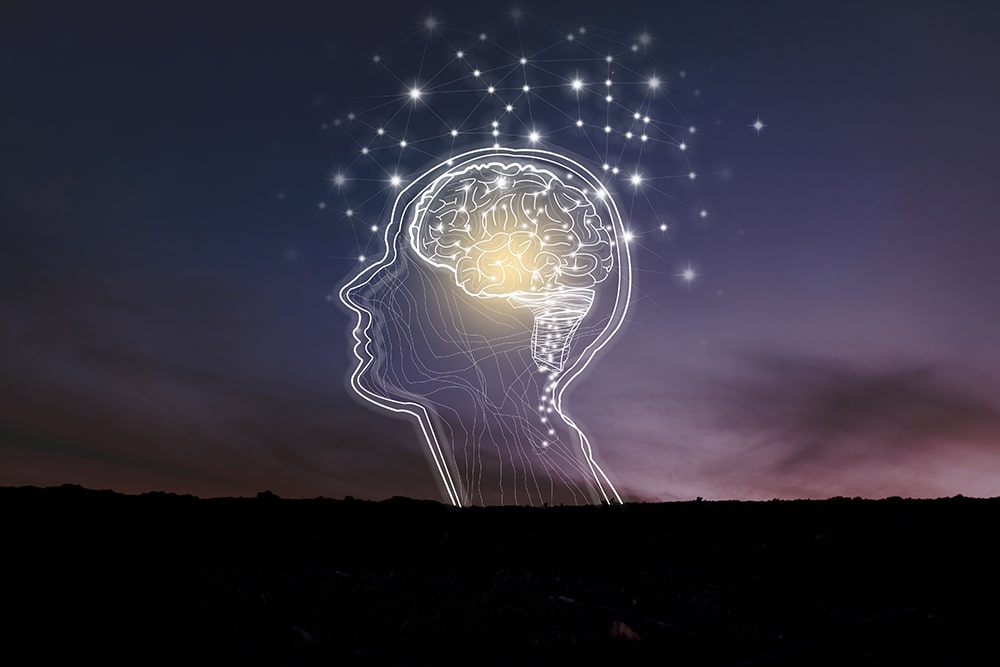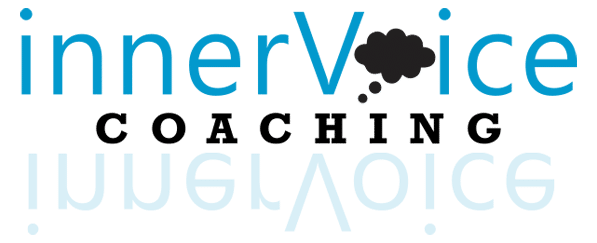12 May THIS IS YOUR BRAIN ON GOALS

By Maria McEvoy
You may remember (or you may be too young) the 1987 anti-drug commercial: This Is Your Brain On Drugs. The voice over ominously begins with “this is your brain…” followed a close up of cracked egg dropped into the hot frying pan and as it sizzles you hear “this is your brain on drugs”.
This article is about your “brain on goals”; the neuroscience of goal setting and how your brain lights up like a Christmas tree when you identify a goal and take steps towards achieving it.
There is so much goal setting research out there. It is a very rich topic, with a tremendous amount of information to sort through but I have chosen to focus on three specific areas:
1) Neuronal plasticity or Neurogenesis
2) What I call the The GOAL-dilocks (get it?) of Goal Setting
3) The roles of two neurotransmitters Dopamine and Serotonin
Let’s begin with Neuronal Plasticity. According to Dr Papp, a neuropsychologist and professor at Harvard Medical School, until the mid 90’s we thought that people were born and died with the same finite number of brain cells. The ultimate example of ‘you get what you get, and you don’t get upset’. We now know that ‘neurogenesis’ (new cell growth) occurs throughout life.
It turns out our brains have a huge capacity for “neuronal plasticity” i.e., our brains are highly malleable. Challenging our brains by learning a new skill and setting goals leads to actual changes in the brain and may serve to create new brain patterns and neural connections. This is a tremendous developmental gift and adults of all ages sleepwalk through life not taking full advantage of it.
Next, the GOAL-dilocks of Goal Setting; a term I coined. Rex Wright, a psychologist at the University of North Texas, measures changes in systolic blood pressure as people take on all kinds of challenges. He learned that when people properly set goals, their systolic blood pressure gets a boost, but the difficulty level of that goal makes a significant difference.
If the goal is easy to achieve, we get a nice spike in our BP, but the study also found that if we have decided that the goal is impossible, the systolic blood pressure stays low as if we have written it off as unachievable and already given up.
If the goal is perceived as moderately hard but feels like a feasible challenge, we get the highest spike. Our bodies react with the most excitement when the goal is challenging but achievable. That is why I call it the GOAL-DILOCKS of Goal Setting – the goal can’t be too easy, it can’t be too hard, it has to be juuuuuuust right.
Finally, the roles of Dopamine and Serotonin (two of our happiness hormones) in goal setting. Dopamine, and the associated excitement we feel, is released in the brain when we expect a reward. Reward seeking behavior increases the level of dopamine transmission in the brain. But what we know is that it is releases not just when we achieve a long-sought goal but also when we simply take a step toward a goal. Learning to ride a bike, playing an instrument, summiting a mountain, and getting a promotion all release dopamine in our brain.
Serotonin flows in the brain when we feel significant or important. When you feel confident and take pride in your work serotonin is flowing. Also, when we receive social recognition from our peers and communities, when we reach a goal and we receive praise for it, serotonin is released. That may explain why every time I think about being on Kilimanjaro’s summit for my 50th birthday, I get a faraway, dreamy look in my eye.
With every step we take towards goal achievement, we release dopamine, we get a sense of pleasure, we feel focused and motivated. But what happens if we fail to meet our goal? The Brain which up to this point has been our ultimate ally, steps in as the ultimate punisher. The dopamine drip cuts off suddenly and the associate feeling is quite unpleasant. Our brain has been treating the goal as a possession; it has absorbed and woven this goal into our self-image and identity. Failing to meet our goal leads to feeling of loss, anxiety, fear, sadness, etc. The contrast between what we hoped, and the reality is not pleasant, and we go from feeling like we are on top of the world to a failure in no time.
My job as a personal life coach is to help you identify ways to prevent failure from happening and to prepare you for obstacles; it is all in how the goal is designed and broken down. The goal down must be broken down into manageable pieces (eating the elephant one bite at a time as we say) and most importantly, you must plan for the inevitable obstacles.
To summarize: we know that we have the gift of “neural plasticity” and now we also know that certain hormones are released, and specific physiological responses occur when we set goals. We also understand that our brain can act as punisher when we fail to meet a goal. Our life coaching collaboration will take full advantage of this knowledge and together we will clarify, breakdown and design your goal to maximize the probability of success.
You may remember (or you may be too young) the 1987 anti-drug commercial: This Is Your Brain On Drugs. The voice over ominously begins with “this is your brain…” followed a close up of cracked egg dropped into the hot frying pan and as it sizzles you hear “this is your brain on drugs”.
This article is about your “brain on goals”; the neuroscience of goal setting and how your brain lights up like a Christmas tree when you identify a goal and take steps towards achieving it.
There is so much goal setting research out there. It is a very rich topic, with a tremendous amount of information to sort through but I have chosen to focus on three specific areas:
1) Neuronal plasticity or Neurogenesis
2) What I call the The GOAL-dilocks (get it?) of Goal Setting
3) The roles of two neurotransmitters Dopamine and Serotonin
Let’s begin with Neuronal Plasticity. According to Dr Papp, a neuropsychologist and professor at Harvard Medical School, until the mid 90’s we thought that people were born and died with the same finite number of brain cells. The ultimate example of ‘you get what you get, and you don’t get upset’. We now know that ‘neurogenesis’ (new cell growth) occurs throughout life.
It turns out our brains have a huge capacity for “neuronal plasticity” i.e., our brains are highly malleable. Challenging our brains by learning a new skill and setting goals leads to actual changes in the brain and may serve to create new brain patterns and neural connections. This is a tremendous developmental gift and adults of all ages sleepwalk through life not taking full advantage of it.
Next, the GOAL-dilocks of Goal Setting; a term I coined. Rex Wright, a psychologist at the University of North Texas, measures changes in systolic blood pressure as people take on all kinds of challenges. He learned that when people properly set goals, their systolic blood pressure gets a boost, but the difficulty level of that goal makes a significant difference.
If the goal is easy to achieve, we get a nice spike in our BP, but the study also found that if we have decided that the goal is impossible, the systolic blood pressure stays low as if we have written it off as unachievable and already given up.
If the goal is perceived as moderately hard but feels like a feasible challenge, we get the highest spike. Our bodies react with the most excitement when the goal is challenging but achievable. That is why I call it the GOAL-DILOCKS of Goal Setting – the goal can’t be too easy, it can’t be too hard, it has to be juuuuuuust right.
Finally, the roles of Dopamine and Serotonin (two of our happiness hormones) in goal setting. Dopamine, and the associated excitement we feel, is released in the brain when we expect a reward. Reward seeking behavior increases the level of dopamine transmission in the brain. But what we know is that it is releases not just when we achieve a long-sought goal but also when we simply take a step toward a goal. Learning to ride a bike, playing an instrument, summiting a mountain, and getting a promotion all release dopamine in our brain.
Serotonin flows in the brain when we feel significant or important. When you feel confident and take pride in your work serotonin is flowing. Also, when we receive social recognition from our peers and communities, when we reach a goal and we receive praise for it, serotonin is released. That may explain why every time I think about being on Kilimanjaro’s summit for my 50th birthday, I get a faraway, dreamy look in my eye.
With every step we take towards goal achievement, we release dopamine, we get a sense of pleasure, we feel focused and motivated. But what happens if we fail to meet our goal? The Brain which up to this point has been our ultimate ally, steps in as the ultimate punisher. The dopamine drip cuts off suddenly and the associate feeling is quite unpleasant. Our brain has been treating the goal as a possession; it has absorbed and woven this goal into our self-image and identity. Failing to meet our goal leads to feeling of loss, anxiety, fear, sadness, etc. The contrast between what we hoped, and the reality is not pleasant, and we go from feeling like we are on top of the world to a failure in no time.
My job as a personal life coach is to help you identify ways to prevent failure from happening and to prepare you for obstacles; it is all in how the goal is designed and broken down. The goal down must be broken down into manageable pieces (eating the elephant one bite at a time as we say) and most importantly, you must plan for the inevitable obstacles.
To summarize: we know that we have the gift of “neural plasticity” and now we also know that certain hormones are released, and specific physiological responses occur when we set goals. We also understand that our brain can act as punisher when we fail to meet a goal. Our life coaching collaboration will take full advantage of this knowledge and together we will clarify, breakdown and design your goal to maximize the probability of success.

No Comments